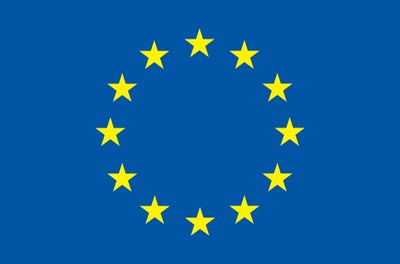Work Package 1: Technical spectroscopic and imaging developments
Researchers working on work package 1 will development of a suite of high-quality pulse sequences and ancillary hardware for the optimal utilisation of DNP- and PHIP-derived hyperpolarisation in in vitro, in cell and in vivo experiments. Tasks include:
· The development of methods for optimal DNP-enhanced in vitro studies of proteins, using dual-centre magnets for dissolution DNP, as well as fast-injection tests relying on hyperpolarised water.
· Developing improved dissolution DNP experiments to study protein ligand interactions, and generating experimental protocols for investigations of the molecular dynamics involved during the binding and re-folding of proteins.
· Optimisation of the dissolution process and construction of 5mm flow cells of NMR studies
· “Ultrafast” MR spectroscopy (MRS) and spectroscopic imaging (MRSI) experiments will be optimised for use with hyperpolarisation techniques. These will include the development of new spectroscopic imaging methods with unprecedented sensitivity and speed, the development of new pulse sequences to extract the amount of molecular metabolic information without the usual imaging constraints.
· Further development of ultrafast imaging sequences for both preclinical and clinical uses of hyperpolarised metabolites, and multiple-quantum sequences for background-free PHIP.
· Explore new ways to optimise the DNP process, using double-resonance DNP approaches and higher Field/Temperature ratios for the polarisation.
· Explore new ways to optimise the SABRE process, using continuous PHIP hydrogenation methods
Partners contributing to tasks in WP1 include University of Birmingham, University of Nottingham, Weizmann Institute of Science, and Universitaetsklinikum, Danmarks Tekniske Universitet, University of York, Oxford Instruments**, EPFL** and Bruker Biospin**.
Work Package 2: Enabling PHIP and DNP technologies
In order to develop new applications of PHIP and DNP technologies, chemicals with novel labelling patterns will need to be synthesised. WP2 will therefore focus on developing and synthesising these new chemical isomers needed for performing dissolution DNP and PHIP experiments with the highest possible hyperpolarisation, and in bio-compatible conditions. Fellows working on WP2 will receive training in the preparation of these compounds.
Targets of chemical synthesis in WP2 include:
§ Organic synthesis of new polarising agents in which various parameters will be optimised to maximise their efficacy for dissolution DNP.
§ Organic synthesis of new isotope labelled metabolic precursors for DNP studies.
§ Synthesis of new catalysts and metabolic precursors for SABRE
Partners contributing to tasks in WP2 include Universite D’Aix Marseilles, CortecNet (for up scaling compounds into large quantity commercial products), JW Goethe Universitaet Frankfurt am Main (for synthetic developments), Rotem Industries (with focus on large-scale GMP-grade commercialisation), and University of York
Work Package 3: Biomedical Applications I (biomolecular & in vitro)
Fellows working on WP3 will receive training in biomolecular and in vitro applications of NMR, and through their projects will also develop these applications.
§ Development of biomolecular applications focussed on small molecules and proteins, as well as protein folding.
§ Development of applications for ex situ dissolution DNP and for dual-centre magnets, and PHIP-based LOGSY binding studies.
§ In vitro applications in cancer metabolism. This will include metabolic flux analyses in a variety of cancers.
Partners contributing to tasks in WP3 include University of Nottingham, University of York, Weizmann Institute of Science, Oxford Instruments**, University of Birmingham, and University of Cambridge.
Work Package 4: Biomedical Applications II (in vivo)
Fellows on working on WP4 will develop and receive training for pre-clinical in vivo applications of hyperpolarised DNP and PHIP.
§ Design of pre-clinical experiments in mice using [1-13C,U-2H]lactate. Test of other metabolic precursors developed by JW Goethe Universität Frankfurt am Main and CortecNet.
§ Test optimal sequences and experiments for pre-clinical SABRE, linking work of University of York and new compounds from JW Goethe Universität Frankfurt am Main.
Partners contributing to tasks in WP2 include Universite D’Aix Marseilles, CortecNet (for up scaling compounds into large quantity commercial products), JW Goethe Universität Frankfurt am Main (for synthetic developments), Rotem Industries (with focus on large-scale GMP-grade commercialisation), and University of York
Work Package 5: Dissemination and Outreach
Fellows will be involved in Project Dissemination and Outreach activities such as preparing podcasts, and newsletters, writing scientific publications, presenting their work to scientific conferences, and being involved in the development of GMP grade compounds
Work Package 6: Training, workshops, secondments
All Fellows will undertake secondments at other partner's labs during their fellowships to expand their reaserch and training, and to also assist them in building networks of working relationships to aid them in their future careers.
Europol will organise a number of network-wide events, some of which will be open to the wide academic community. Fellows will have the opportunities at these events to gain more skills on presentating their work, and building networks with both the other ESR Fellows and other researchers.
Europol will organise Training events aimed at developing the skills young researchers will need in their future careers, both developing their skills and knowledge in the field of hyperpolarisation NMR, and in transferable skills the Fellows will be able to use in their future careers.
** These are partner organisations, and will not be recruiting fellows as part of the EUROPOL project
